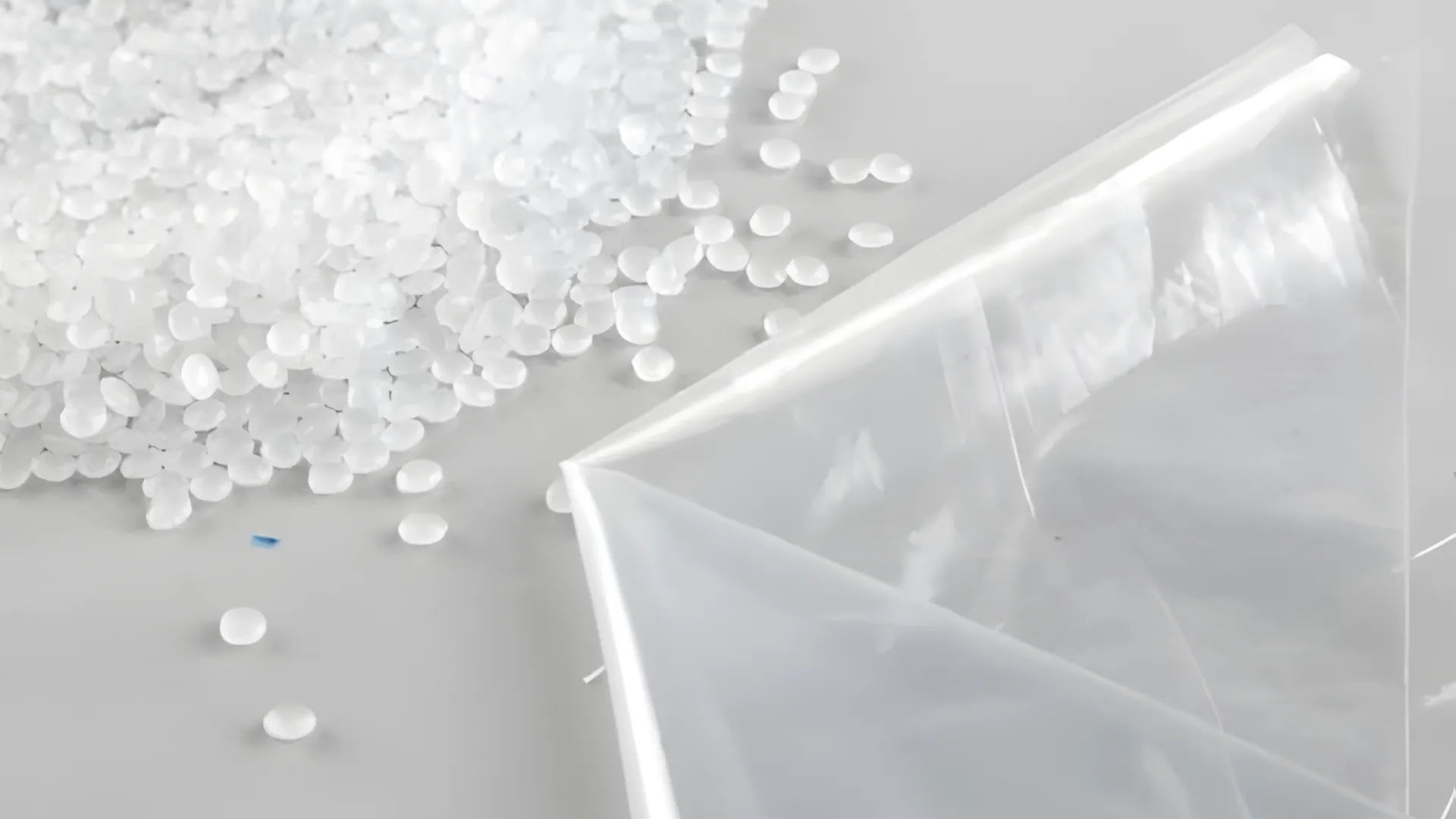Polyethylene (PE) and Polypropylene (PP) films are ubiquitous in packaging, agriculture, and various industrial applications. From stretch wrap and carrier bags to agricultural films and industrial liners, their lightweight, flexible, and durable nature makes them incredibly useful. However, these same properties present significant challenges when it comes to recycling. As the demand for sustainable practices and circular economy solutions intensifies, efficiently processing these film materials is paramount.
At Rumtoo, we understand the intricacies of plastic recycling. For businesses looking to turn PE/PP film waste into high-quality, reusable pellets, the choice of machinery is critical. This is where the Cutter-Compactor Plastic Pelletizing Machine truly shines. Let’s delve into why this technology is ideally suited for tackling the complexities of PE/PP film recycling.
Understanding the Unique Challenges of Recycling PE/PP Films
Before we explore the solution, it’s important to grasp why PE/PP films are notoriously difficult to recycle using conventional methods:
- Low Bulk Density: Films are light and voluminous, meaning they take up a lot of space for their weight. This makes it difficult to feed consistently into a standard extruder.
- Feeding Inconsistencies: Their tendency to tangle, bridge, or “fluff up” in hoppers leads to uneven material flow, disrupting the extrusion process and affecting output quality.
- Moisture Content: Films, especially post-consumer or agricultural ones, can retain moisture, which can cause voids and imperfections in the final pellets if not managed.
- Contamination: While pre-washing is crucial, some residual light contamination or printing inks can still be present.
- Heat Sensitivity: Films can degrade if exposed to excessive or uneven heat during the initial processing stages.
A standard pelletizing line without adequate pre-processing struggles to overcome these hurdles efficiently.
Enter the Cutter-Compactor: How Does It Work?
A Cutter-Compactor Pelletizing Machine (often called an agglomerating pelletizer or shredder-compactor pelletizer) integrates several crucial steps into a single, efficient unit, specifically designed to address the challenges posed by low-density materials like PE/PP films.
Here’s a simplified workflow:
- Alimentación: Film waste (loose, baled, or rolled) is typically fed into the cutter-compactor unit via a conveyor belt.
- Cutting & Shredding: Inside the compactor drum, rotating and stationary blades cut and shred the film into smaller, more manageable pieces.
- Friction & Densification (Agglomeration): The continuous high-speed cutting action generates frictional heat. This heat softens and partially melts the film scraps, causing them to shrink, densify, and agglomerate into irregular, crumb-like particles. This is a crucial step, as it dramatically increases the bulk density of the material.
- Pre-heating & Degassing: The frictional heat also pre-heats the material and helps to evaporate surface moisture, acting as a preliminary degassing stage.
- Direct Feeding to Extruder: The hot, densified material is then directly and continuously fed from the compactor into the connected extruder screw. Because the material is already hot and relatively homogenous, it melts more efficiently and consistently within the extruder.
- Extrusion, Filtration, Pelletizing: The extruder melts, homogenizes, and pushes the plastic through a screen changer (to filter out contaminants) and then through a die head. The molten strands are then cut into pellets (typically using a water-ring pelletizer or under-water pelletizer for PE/PP).
- Cooling & Drying: The freshly cut pellets are cooled and dried, ready for storage or re-use.
Key Advantages of Using a Cutter-Compactor for PE/PP Films
The integrated design of a cutter-compactor system offers numerous advantages over other recycling methods when processing PE/PP films:
- Enhanced Feeding & Throughput:
- The primary benefit is solving the low bulk density issue. By densifying the fluffy film into heavier agglomerates, the cutter-compactor ensures a consistent, forceful feed into the extruder. This prevents bridging and irregular flow, leading to significantly higher and more stable throughput.
- Improved Melt Quality & Homogenisation:
- The pre-heating and partial plasticizing in the compactor means the material enters the extruder in a much better state. This reduces the thermal and mechanical stress on the extruder screw, leading to a more homogenous melt with fewer unmolten particles and improved dispersion of any additives or masterbatch.
- Eficiencia energética:
- Because the material is pre-heated by friction in the compactor, the extruder requires less energy to bring the plastic to its final melting temperature. This can result in noticeable energy savings compared to feeding cold, loose film (if that were even practically feasible at scale).
- Reduced Labour and Footprint:
- Combining cutting, densifying, and feeding into one unit eliminates the need for separate shredders, agglomerators, and complex conveying systems between them. This reduces the overall machinery footprint, capital investment, and labor required for operation and maintenance.
- Effective Moisture Removal:
- El calor generado durante el proceso de compacayuda a evaporuna cantidad significativa de humedad superficial de las películas. Este paso de pre-secado es vital para producir pellets de alta calidad sin void-free. Algunos diseños avanzados también incorporan puertos de ventilación en la compactadora o extrusora para mejorar la desgasificación.
- Versaticon los tipos y condiciones de película:
- Los compactadores de corte pueden manejar una variedad de películas de PE/PP, incluyendo LDPE, LLDPE, HDPE, y PP, si están impres, ligeramente sucias (post-lavado), o tienen diferentes espes. El agresivo proceso de corte y compaces robusto.
- Mejor calidad del Pellet:
- La combinación de alimentación consistente, masa funhomogénea y desgasificación efectiva da como resultado gránulos de tamaño y forma uniformes, con buena densidad y menos imperfec. Esto los hace más valiosos para la reintegración en los procesos de fabricación.
Máquina de granulado cutter-compacvs. métodos alternativos para películas
- Alimentación directa a la extrusora estándar: Impráctico para películas debido a la baja densidad aparente y problemas de alimentación, lo que resulta en una producción muy baja y mala calidad.
- Trituradora separada + alimentador de fuerza + extrusora: Mejor que la alimentación directa, pero todavía no ofrece las ventajas de densiy precalentamiento de una cortcompactadora, lo que podría conducir a un menor rendimiento y un mayor consumo de energía en la extrusora.
- Trituradora separada, aglomeradora y peletizadora: Este es un sistema viable pero más complejo. Involucra múltiples máquinas independientes, lo que requiere más espacio en el piso, más manipulación de materiales entre las etapas, potencialmente un mayor uso de energía, y una sincronización más compleja. El cutter-compacintegra estos pasos de forma más sencilla.
| La característica | Pelletizer | Trituradora + alimentador de fuerza + extrusora | Trituradora separada + aglomerador + Pelletizer |
| Manipulación de las películas | excelente | moderado | bueno |
| Aumento de la densidad aparente | alto | baja | Alto (en aglomerador) |
| Consistencia de la alimentación | Muy buena | De lo justo a lo bueno | Good (aglomerador posterior) |
| Eficiencia Energética | De bueno a muy bueno | moderado | De lo justo a lo bueno |
| Huella huella | compacto | moderado | grande |
| Pasos del proceso | integrada | múltiples | Múltiples, disp |
| Rendimiento típico | alto | Moderado a bajo | Moderado a alto |
| Calidad del Pellet | Muy buena | De lo justo a lo bueno | bueno |
Elegir la cortcompacadecuada para sus necesidades con Rumtoo
Al seleccionar una máquina de peletización de plástico cortcompacpara películas de PE/PP, tenga en cuenta factores como:
- Requisitos de capacidad: Adapte el rendimiento de la máquina (kg/h) a sus necesidades de procesamiento.
- Tipo de película y condición: Considere la limpieza, el contenido de humedad y los niveles de impresión de su materia prima.
- Nivel de automatización: Busque funciones que simplifiquen las operaciones y reduzcan la intervención manual.
- Requisitos de desgasificación: Para películas fuertemente impreso ligeramente húmedo, un sistema con desgasificación mejorada (por ejemplo, doble etapa de desgasificación al vacío en la extrusora) es beneficioso.
- Sistema de filtración: Un sistema de filtración de masa sólido es crucial para eliminar contaminantes y asegurar la pureza del pellet.
- Soporte y experiencia del fabricante: Socio con un proveedor experto como Rumtoo que puede proporcionar apoyo técnico, piezas de repuesto y asesoramiento de optimización de procesos.
Conclusión: la elección inteligente para el reciclaje de película PE/PP
Para las empresas serias sobre el reciclaje eficiente y rentable de películas de PE/PP, el Cutter-Compactor Plastic Pelletizing Machine Ofrece una serie convincente de beneficios. Su capacidad para superar los desafíos inherentes de los materiales de película de baja densidad mediante un corte, densi, precalentamiento y alimentación eficaz de la extrusora conduce a un mayor rendimiento, una calidad de pellet superior y una mayor eficiencia operativa.
En Rumtoo, nos especializamos en proporcionar maquinaria de peletización de plástico robusto y fiable adaptado a sus necesidades específicas. Si busca mejorar sus capacidades de reciclaje de película o establecer una nueva línea de procesamiento, nuestros sistemas cortcompacrepresentan una inversión inteligente hacia un futuro más sostenible y rentable.
Listo para transformar sus residuos de película PE/PP en recursos valiosos? Ponte en contacto con el equipo de Rumtoo Hoy para una consulta y descubra cómo nuestras máquinas de granulado cortcompacpueden revolusus operaciones de reciclaje!

